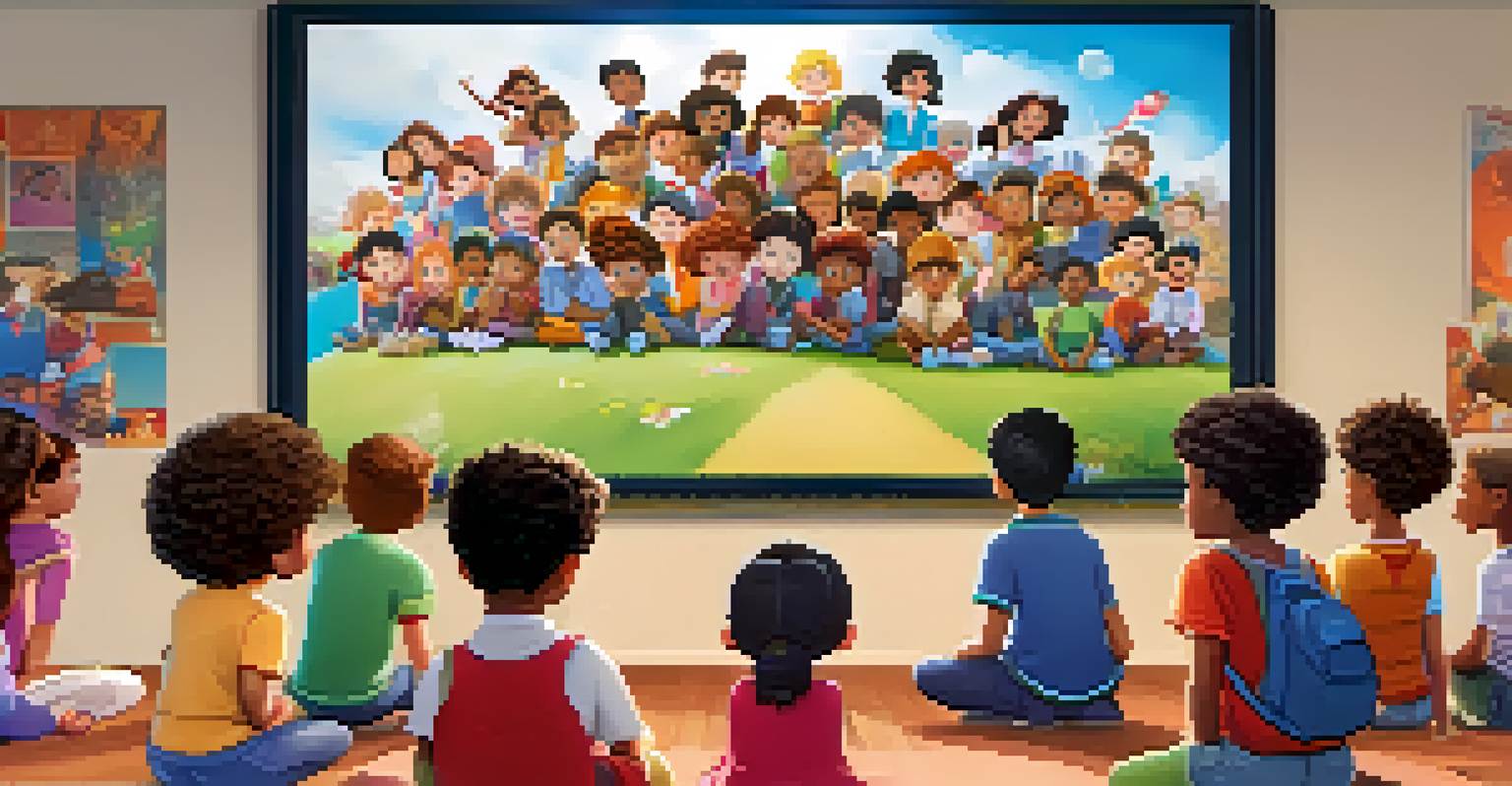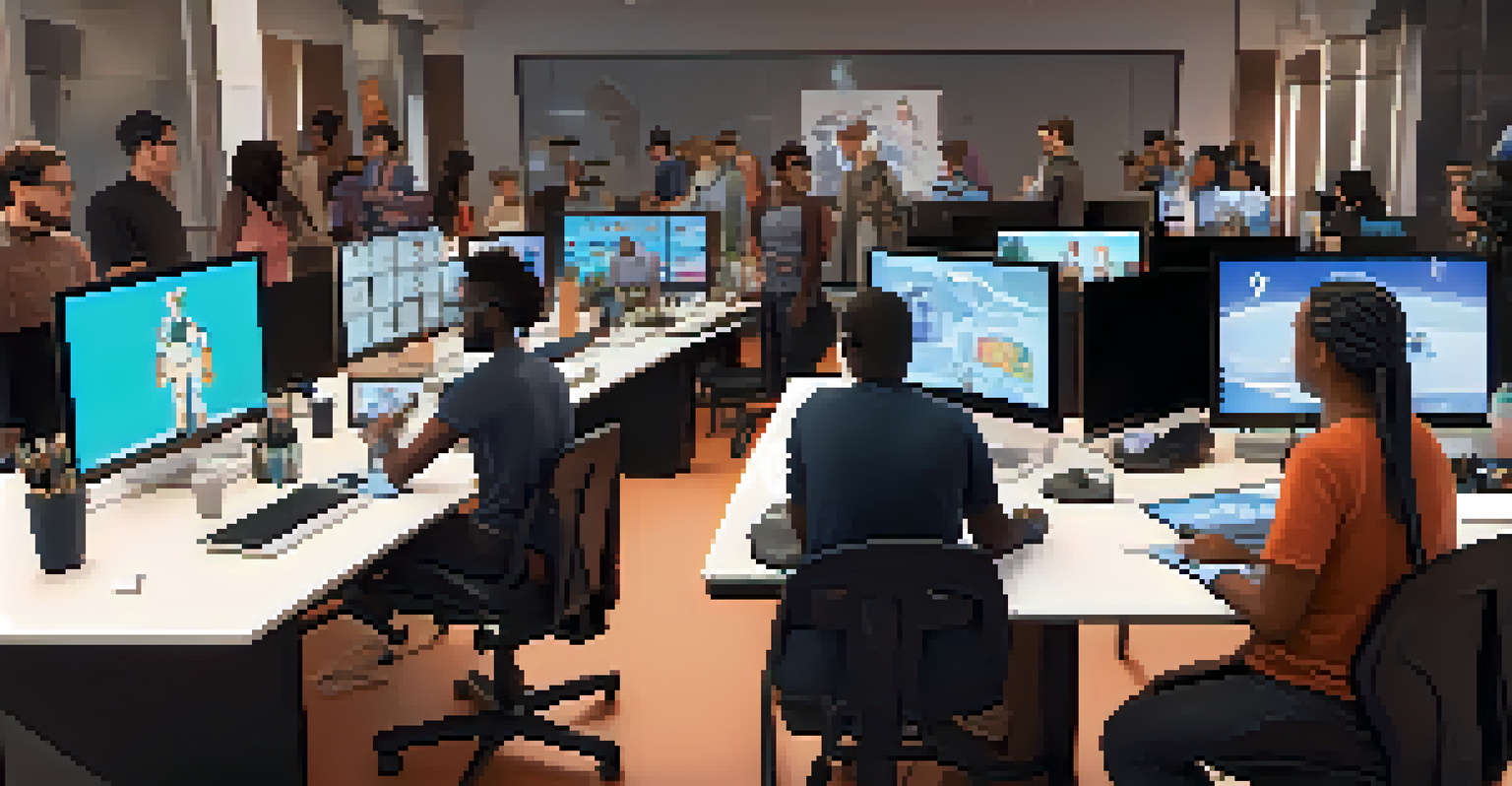Animation and Inclusivity: Expanding Hollywood's Storytelling

The Power of Animation in Storytelling
Animation has long been a powerful medium for storytelling, allowing creators to bring fantastical worlds and characters to life. Unlike live-action films, animated stories have the unique ability to transcend physical limitations, offering limitless opportunities for creativity. This freedom is particularly valuable when it comes to representing diverse voices and experiences.
Animation can explain whatever the mind of man can conceive.
For instance, animated films like 'Coco' and 'The Princess and the Frog' showcase cultures that are often underrepresented in mainstream media. By embracing animation, filmmakers can explore complex narratives that resonate with a broader audience while also celebrating unique cultural identities. This not only enriches the storytelling landscape but also fosters a sense of belonging among viewers.
Moreover, animated storytelling can challenge stereotypes and break down barriers, allowing for a more inclusive narrative. As animation continues to evolve, it becomes increasingly important for creators to leverage this medium to tell stories that reflect the diversity of our world.
Diversity in Characters and Narratives
The characters we see on screen can profoundly influence how we perceive ourselves and others. With the rise of inclusivity in animation, there's a growing trend toward creating characters that represent a wide array of backgrounds, abilities, and experiences. This shift is essential for fostering empathy and understanding among audiences.

Animated series like 'Steven Universe' and 'She-Ra and the Princesses of Power' have made significant strides in showcasing LGBTQ+ characters and storylines. By normalizing diverse identities and experiences, these shows pave the way for younger viewers to see themselves reflected in the media they consume. This representation is not just a trend; it's a vital step towards inclusivity.
Animation Empowers Diverse Voices
The animation industry is increasingly providing platforms for underrepresented creators to share authentic stories, enriching the narrative landscape.
As more creators recognize the importance of diverse characters, we can anticipate a richer tapestry of narratives that resonate with audiences from all walks of life. This evolution in character development not only enhances storytelling but also broadens the scope of who gets to be a hero in animated worlds.
Empowering Underrepresented Voices
One of the most exciting aspects of the animation industry is its potential to empower underrepresented voices. With the advent of digital platforms and independent animation, creators from diverse backgrounds have the opportunity to share their stories without the constraints of traditional Hollywood gatekeepers. This democratization of storytelling is crucial for broadening perspectives in animation.
The stories we tell matter. They can define who we are and shape the future we want.
For example, short films like 'Hair Love' highlight the beauty and complexity of Black hair and culture from the perspective of a Black father. This film not only resonates with audiences but also provides a platform for voices that have historically been marginalized. By giving these creators visibility, we enrich the narrative landscape of animation.
As the industry continues to embrace inclusivity, we can expect a surge of innovative storytelling that challenges norms and celebrates diversity. Empowering underrepresented voices is not just about representation; it's about sharing authentic experiences that resonate on a personal level.
Animation as a Tool for Education
Animation is a powerful educational tool that can be used to teach important social issues and foster inclusivity. By presenting complex topics in an engaging visual format, animated content can make difficult conversations more approachable for both children and adults. This method of storytelling can spark curiosity and promote understanding.
For instance, educational animations addressing themes like mental health, disability, and cultural heritage can break down stigma and encourage dialogue. Shows like 'Big Mouth' tackle topics surrounding puberty and mental health, opening up avenues for discussion that might be uncomfortable in live-action formats. This not only educates but also builds empathy among viewers.
Diversity Enhances Storytelling
Inclusive characters and narratives in animated content foster empathy and allow audiences from various backgrounds to see themselves represented.
As animation continues to evolve, its role as a tool for education will only grow. By incorporating inclusive narratives into educational content, we can equip audiences with the knowledge and understanding they need to navigate a diverse world.
The Role of Technology in Inclusive Storytelling
Advancements in technology have significantly impacted the animation industry, making it easier for diverse voices to be heard. Tools like 3D animation software and virtual reality allow creators to explore storytelling in innovative ways, reaching wider audiences than ever before. This technological evolution is crucial for inclusivity.
For example, platforms like YouTube and TikTok have empowered creators to share their animated stories without needing traditional studio backing. These platforms enable independent animators to connect with audiences directly, showcasing narratives that might not fit Hollywood's mold. The result is a vibrant tapestry of voices that enriches the animation landscape.
As technology continues to evolve, so too will the opportunities for inclusivity in animation. Embracing these advancements can lead to groundbreaking storytelling that reflects the complexities of our world.
Challenges in Achieving Inclusivity
Despite the progress made in animation, challenges remain in achieving true inclusivity. Many studios still grapple with the risk of tokenism—where a character is included solely for diversity's sake without meaningful development. This can undermine the very goal of representation and leave marginalized audiences feeling alienated.
Moreover, there is often a lack of diverse voices in the creative process itself. When the people creating these stories don’t reflect the diversity of the audience, it can lead to misrepresentation or oversimplification of complex identities. Addressing this issue requires a commitment from studios to hire diverse talent in all aspects of production.
Technology Fuels Inclusive Animation
Advancements in technology enable independent animators to reach wider audiences and tell diverse stories without traditional studio constraints.
Overcoming these challenges is essential for fostering genuine inclusivity in animation. It requires ongoing dialogue within the industry, a willingness to learn from mistakes, and a commitment to amplifying diverse voices at every level of storytelling.
The Future of Animation and Inclusivity
Looking ahead, the future of animation promises exciting possibilities for inclusivity. With audiences demanding more authentic representation, studios are increasingly recognizing the value of diverse narratives. This shift is not just a trend; it's becoming a fundamental expectation in the industry.
New projects are emerging that prioritize inclusivity, showcasing stories from various cultures and communities. As more creators step forward to share their unique perspectives, we can expect a more vibrant and varied animation landscape. This evolution signals a commitment to telling stories that reflect the richness of human experience.

Ultimately, the future of animation and inclusivity will depend on the industry's willingness to listen to diverse voices and embrace change. By continuing to challenge norms and elevate underrepresented narratives, animation can become a powerful vehicle for understanding and connection in an increasingly diverse world.